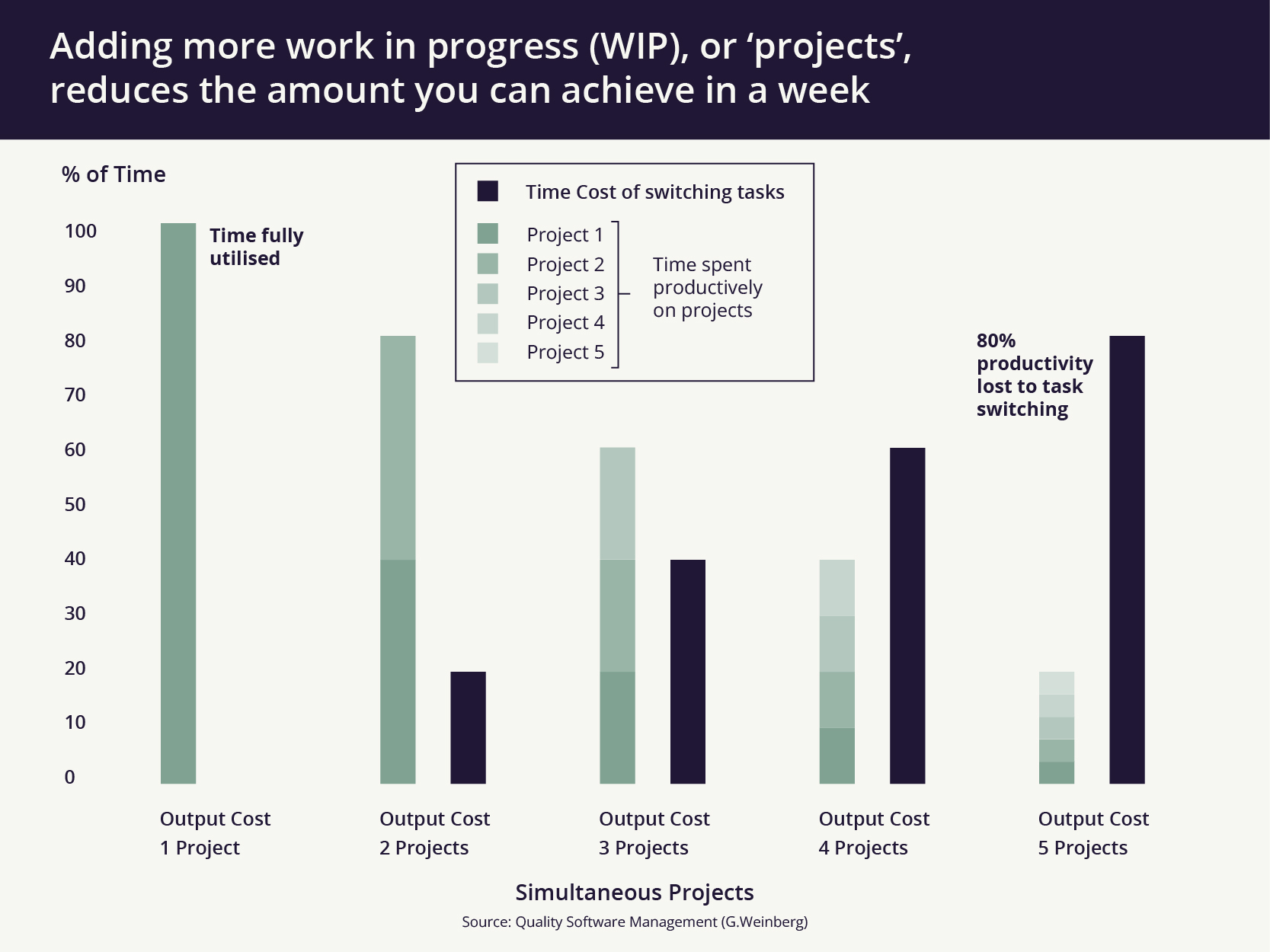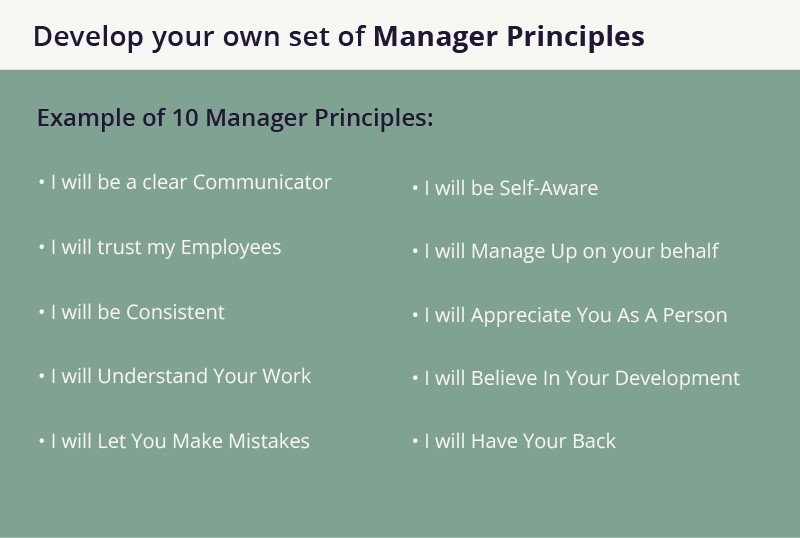My 3 interesting things for you this month…
1. Achieve more by doing less. No, really.
It’s something we all often hear – do more by doing less, but is it true? Does it really work? Well here’s the theory behind it.
Research shows that for every project that is added to the first in a simultaneous work load in a week, 20% of time is lost to the cost of task switching. Check out this chart of how useful time would be used in a week based on the number of simultaneous projects – 5 projects = 80% time lost.

What is the ‘cost of task switching’? On average, it takes the brain 23 minutes to get back into ‘flow state’, meaning decent concentration and really impactful productivity. Every time you switch from one project – or big piece of work – to another – this resets your productivity cost. Try to limit the number of projects you work on at any time.
Still not convinced? Check out this 8 minute video where someone shows how this really works.
2. What type of manager do you want to be?
Most of us don’t get great training on how to be a manager. Many of us get none at all. But a Gallup poll of over 1 million employed U.S. workers found that the #1 reason people quit their jobs is a bad manager.
So what can we do about this?
There are many factors that make great management, but I found one really simple framework that will go a long way to setting a great foundation with your team. Setting and sharing your own Manager Principles can help to build a foundation of trust and set clear expectations.

How does it work? By committing to your team how you will act, you set some accountability. They know what they can expect of you.
Do you have to be perfect all the time? No! But setting an intention and then empowering the team to hold you to that will create a stronger sense of trust and team wellbeing.
3. Building an awesome CV!
I’m spending a LOT of time helping people with CVs right now. The great resignation is REAL! I think there are some core principles that will really help most people – things that everyone should be applying.
People also ask – do you have a CV you can share, and the answer is usually: not really because everyone is different. That said, a LinkedIn contact shared a great anonymised CV on last week that captures key principles. Although this is a really junior person’s CV, they manage to cram in a lot of value that they personally create.

Let’s break down what we see here into some key principles based on the colour coding (most to least important):
Note your achievements (blue) – hiring managers want to know the value that you added. What is the business impact that your effort has – this is the critical thing most people need more of.
Quantify your impact (green) – we’re finance people, we should be able to put a number to things! People want to know the specific value of the impact we added. It doesn’t always need to be financial, but it helps.
Using strong active verbs (red) – take ownership of what you did, at whatever level you are at and how you solved problems and added value. Weak verbs such as helped or supported don’t create clarity on what you do.
Key words relevant to your role (orange) – demonstrate you understand and can use the most important phrases related to the job you want
What you actually did (yellow) – responsibilities and context are obviously necessary to include, but the takeaway here, note the mix of yellow to other colours. I see so many CVs starting out where they would be 80%+ yellow. Make sure to balance achievements with responsibilities. As a rule of thumb: I think 40% text on what you did, and 60% text on the impact/how you did it.



